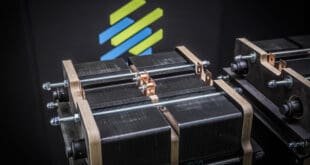There is so much happening in the technology of new energy sources these days but connecti8ng them all together to function is a key element that is being researched these days. This excerpt from research being done in the Northwest is one example. Another is a big wind project slated for development down in Australia has gotten derailed because the plan for interconnecting it the the power grid was deemed flimsy.
Future batteries used by the energy grid to store power from the wind and sun must be reliable, durable and safe, but affordability is really the key to widespread deployment, according to a new report published online March 4 in the journal Chemical Reviews. The report is one of the most comprehensive reviews of electrochemical energy storage to date.
In the report, researchers from the Department of Energy’s Pacific Northwest National Laboratory say that successful electrochemical energy storage, or EES, systems will need to evolve — in some cases, considerably — if they are going to compete financially with the cost of natural gas production. And besides technical improvements, the systems will need to be built to last, using materials that are safe and durable so that batteries could operate more than 15 years and require very little maintenance over their lifetime.
The report provides a comprehensive review of four stationary storage systems — ones considered the most promising candidates for EES: vanadium redox flow, sodium-beta alumina membrane, lithium-ion and lead-carbon batteries. In their study, the PNNL researchers note the potential of each technology but, more importantly, explain what advances must occur with each if they’re ultimately to be deployed.

 Alternative Energy HQ solar power for homes, wind energy, and bio fuel issues
Alternative Energy HQ solar power for homes, wind energy, and bio fuel issues






